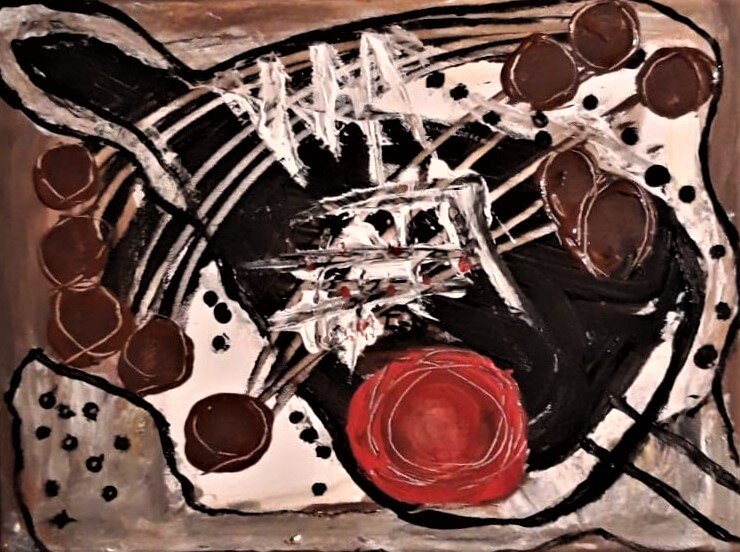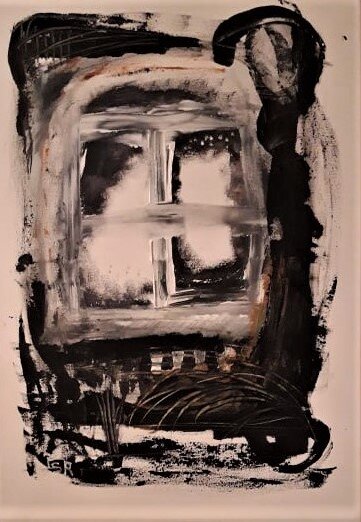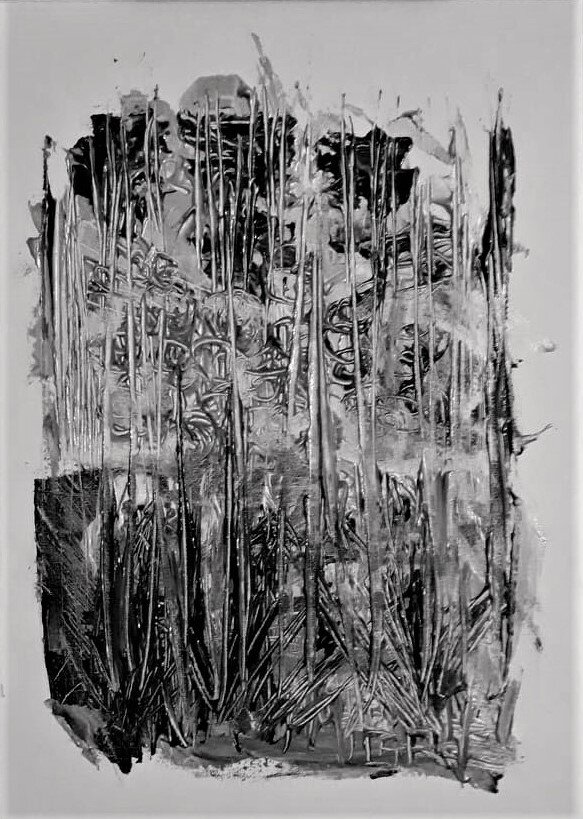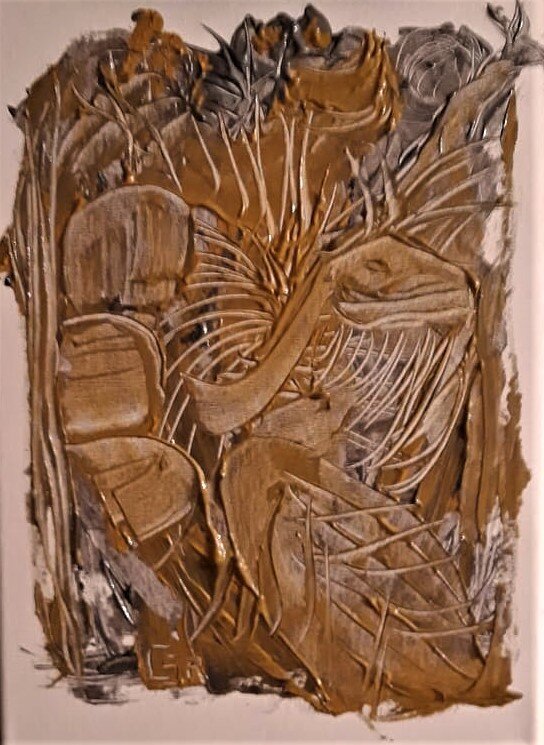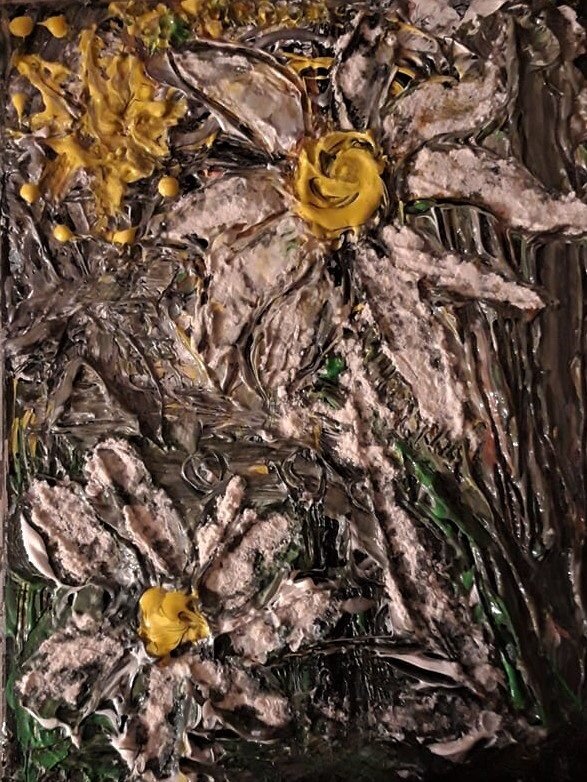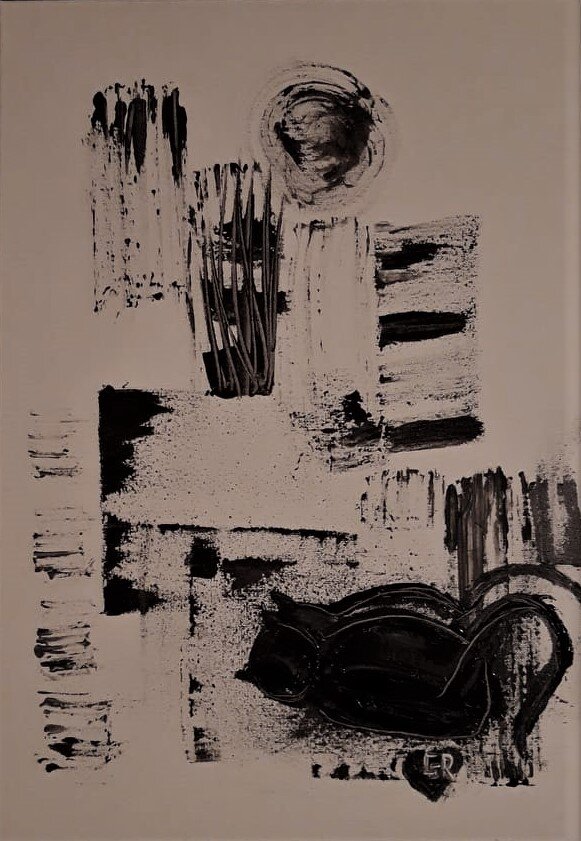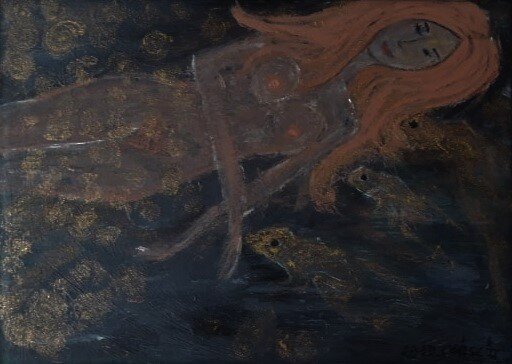The Art and Poetry of Renáta Császár
Renáta Császár is a Hungarian artist using her talents to sew spiritual and intellectual tapestries through the mediums paint, poetry, and photography. Her works are usually in pairs: one poem for one painting or photo, synthesized prematurely by a conversation with the world.
She started writing and painting in Spring 2018 when she realized that she, in fact, is an artist, which very soon has become her ‘way of life’. “Everything changes into a subject of art if you are a poet”, she says, in a vibrant tone that is all too convincing. Then, further illustrating that the meaning of her art is, ultimately, a dialogue between her and the universe. Even the black and white colors on the canvas can be dialogues. The words in her poetry and the images on the canvas are means of communication between her and ethereal sensations, passing now and then gone, from one space in time and place and to be created into another.
Her inspirations come from the depths of her soul, decoding “the messages of a particular moment” then she traces that meaning into words and then brushes into sight. This could be her state of mind at that crossing of space and time, her feelings. A reflective way to interact, a meditative way to “study her being”, she might say.
Spring Eyes
The stars are watching it too.
It is difficult to skip the eyes,
the lakes of unique spectacular moments
that get covered with snow in winter
but come out in springtime
and are suddenly getting dark and mysterious
as they slowly become set against the face
like the eyes of a new spring
new spring eyes
owl eyes
with a familiar glance
on a branch
Fog Above the Water
there’s more than meets the eye
I cannot still let it go
like the fog above the river
I am trying to stay fixed
or let you keep driving me
to places I have never been before
watching you
taking the time
to create the constellations
“Everyone is an artist”, echoing the words of Joseph Beuys, resonating the idea that art makes us more human, less rigid and rule oriented, part of reality — living authentically. Leading to understanding the abundance of being, existing, living.
Typically her artistic process begins with the poems, writing down what she is perceiving, or interpreting, registering about herself in that moment. Her poems (and paintings) have titles such as: ‘Fringes’, ‘Bonnie and Clyde’, ‘The Age of Phyllis”, ‘Mist’, ‘Domestic Thoughts’, ‘Molecules of the Night’. Her words can tell a story, give a reevaluation to an emotion, make one question place and sentiment. In short, there is a variety of genre bending, be it from taking a metaphysical point of view or placing the person reading in the center of the story her poem is telling.
Then comes the paintings, which, at times can seem juxtaposed to the poems. This however, is part of the process she explains. Her paintings often jump out, are contrasted and subdued, abstract but have a story, each piece differs from the other and gives the viewer a sense of a larger story at hand. That story, even for Renáta, is still being told. It is a story she is learning from while she creates it, each moment of her work is a mysterious meeting with her naked self. As she says, “the creation is probably an always changing material even for god, by which he can realise who he really is”.
(1) The Age of Phyllis; (2) Moon (3) Behind the Bars; (4) Dream of the Golden Snake; (5) Where the Wind Eases; (6) Saturday Canvas; (7) Doll; (8) L’heure Des Grenouilles (The hour of frogs)
She also wrote a book with the title Fusion of Zen and Cubism in E.E. Cumming’s Poetry. We can see then how she as an artist might work. Not solely as a poet, then painter, then thinker. None seems to take precedence over the other. The three are at play together and she is there as the observer of what art comes to her. Something magic — “the artist is always a magician”.
Further making the point, she does not give herself genres, no boxes to categorize herself. Maybe in 20 years. But those distinctions are for another time.
Slits
perhaps we don’t even exist
we just outdream ourselves of our cages
to spread our wings
craving for liquid wonder
that disappears when illusions get fixed
so that we can redream ourselves
of our solidified vibrations
again and again
Window with a Cat
’I am not sure what there is outside,
it is dark…
Here there is just a room now -
something we should handle with care
’my dead cat whispers in the window,
though her words have lost their waves,
or perhaps Rimbaud has used them all,
but since it is Friday
I believe everything she says.
What she does tell us is that these are positive messages about life. Her art is a way of detecting and registering beauty existing in the void that serves as the background of human life, a way of taking delight in the slowly passing mystery of events and individuals. As Apollinaire would say: “Et tu observes au lieu d’écrire ton conte en prose/La cétoine qui dort dans le cœur de la rose” Guillaume Apollinaire (ZONE). . However, when asked about what her art should mean for the people reading, viewing, connecting:
“Art is the most human way of living. It helps you discover yourself. It helps you discover others. It makes you realize that you are never alone. It reflects your vulnerable and lovable individuality. It makes you see yourself in the frame of your unique beauty. It is magic.”
The Workshop



